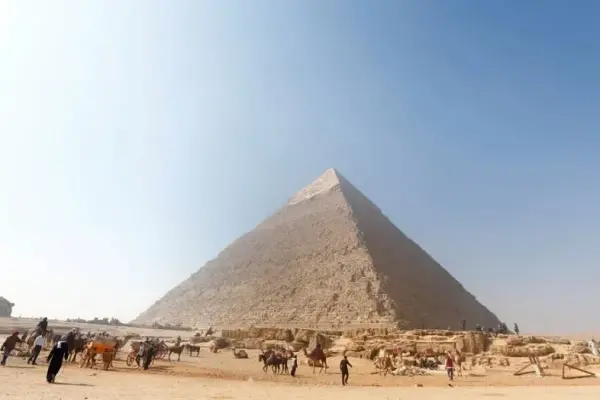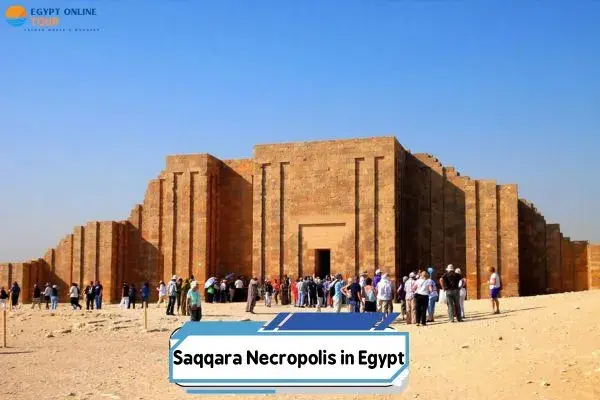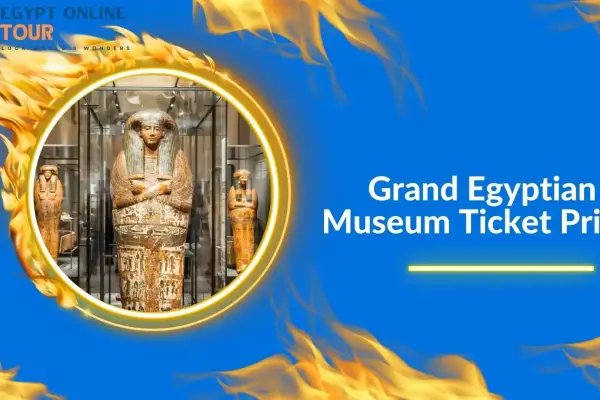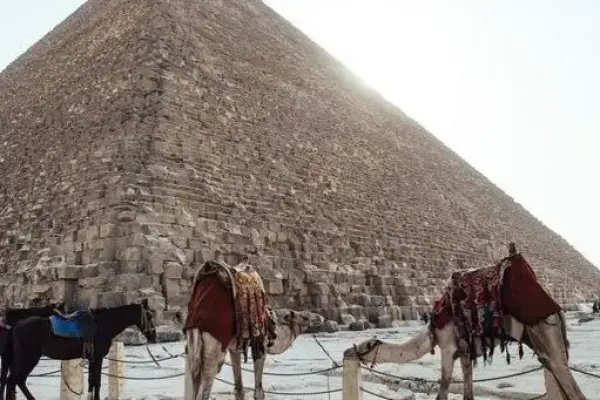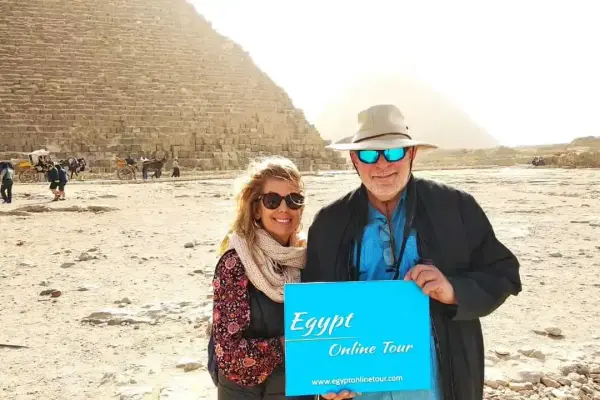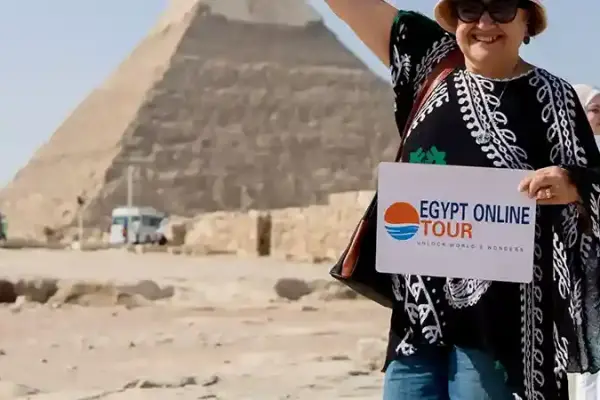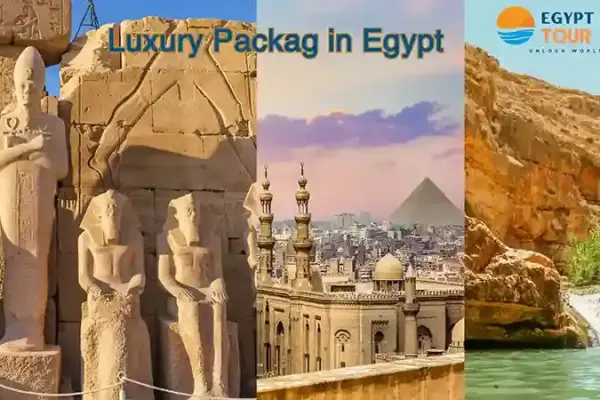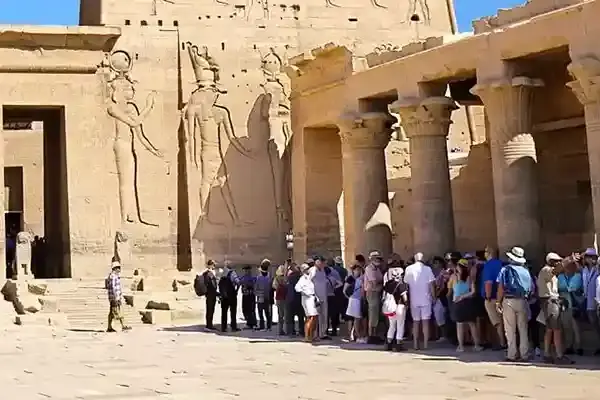If you want to witness history up close and step into the world of the pharaohs, you can’t miss Saqqara Necropolis in Egypt. This place isn’t just a burial site; it’s an open-air museum filled with secrets and stories from thousands of years ago.
From the very first moment, you’ll feel like you’ve traveled back in time to the age of kings and ancient glory.
Table of contents [Show]
- Saqqara Necropolis in Egypt
- Why You Should Visit Saqqara Necropolis
- Major Attractions in Saqqara
- Recent Discoveries in Saqqara
- Cultural and Religious Aspects
- Practical Travel Tips
Saqqara Necropolis in Egypt
Before diving into the details, let’s just say Saqqara isn’t your average archaeological site. It’s a massive area on the edge of ancient Cairo, packed with pyramids and tombs from different eras.
The highlight here is the Step Pyramid of Djoser, known as the very first stone structure in history.
Walking around the site feels like standing in the middle of a civilization that’s still alive after thousands of years.
Many Egypt tour packages include Saqqara Necropolis as a must-see stop, giving travelers a chance to explore one of the oldest and most fascinating burial sites in the world.
Why You Should Visit Saqqara Necropolis
In this part, you’ll see why Saqqara is a dream spot for history lovers, photographers, and anyone who’s passionate about archaeology.
For History Buffs
Saqqara marks the real beginning of stone architecture in ancient Egypt. This is where the shift happened—from mudbrick burials to massive stone monuments.
Every corner shows how the Egyptians changed the course of history with their architectural genius.
For Photography Lovers
If you enjoy taking photos, this place will blow your mind. From the wide pyramid views to the detailed carvings on mastaba walls, and even the magical light during sunrise and sunset—Saqqara is basically an open-air studio full of rare shots waiting for you.
For Archaeology Enthusiasts
There’s always something new happening in Saqqara. Excavation teams are constantly at work, and discoveries of mummies and statues make headlines worldwide.
Visiting here means you’re not only exploring ancient history but also witnessing archaeology in action right before your eyes.
Add Saqqara Necropolis to your 10 Days Cairo, Aswan, Luxor & Hurghada Overland Tour for a deeper glimpse into Egypt’s history.
Historical Significance of Saqqara
Before we get into the practical side, let’s pause for a moment to appreciate the history of Saqqara—because what happened here was the true starting point of ancient Egyptian civilization as we know it.
The Early Beginnings
Saqqara became the official burial ground during Egypt’s very first dynasties. When King Djoser wanted something extraordinary, he turned to a genius named Imhotep, who designed the Step Pyramid.
This wasn’t just another royal tomb—it was the world’s first large-scale stone monument, a turning point in human architectural history.
Evolution Through the Ages
Saqqara didn’t stop with the Old Kingdom. It remained a major burial site for nobles and high priests all the way through the Middle Kingdom and even into the Ptolemaic period.
Each era left its mark—smaller pyramids, richly decorated tomb walls, and even underground complexes that reveal new secrets with every excavation.
Pair the mysteries of Saqqara with the 12 Days Pyramids, Nile & Sinai Tour for a once-in-a-lifetime journey.
Modern Archaeology
What makes Saqqara truly unique is that the story isn’t finished yet. Archaeologists are still uncovering new treasures—bronze statues, intact sarcophagi, and mummies in incredible condition.
Saqqara isn’t just ancient history; it’s a living book that’s still being written today. Many travelers combine a visit to Saqqara with the 8 Days Pyramids & The Nile by Air package for a full cultural experience.
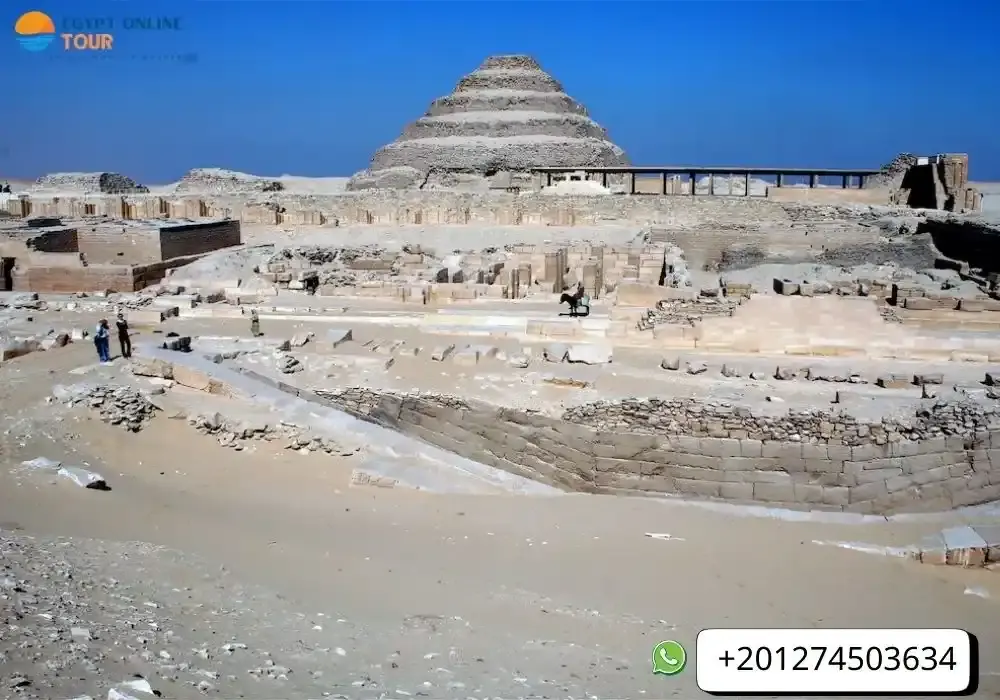
Location and Accessibility from Cairo
Now that we’ve covered the historical value of Saqqara, let’s talk about the practical part: how to get there and what to expect.
Distance from Cairo
Saqqara is very close—around 30 kilometers (about 19 miles) from downtown Cairo. By car or taxi, you’ll get there in about 30–45 minutes.
From Cairo International Airport, the trip usually takes around an hour, depending on traffic.
How to Get There
- Private Car or Taxi/Uber: The fastest and easiest option.
- Private Guided Tours: Perfect for international visitors. These usually include transportation, a licensed guide, and sometimes entry tickets.
- Public Transportation: There are buses and minibuses that reach the area, but they’re not the most convenient or comfortable choice for tourists.
What to Expect on the Road
The drive takes you through Egypt’s rural landscapes—farmlands, local houses, and glimpses of authentic daily life. The journey itself feels like part of the experience.
Travel Time
Usually 40 minutes to just under an hour in normal traffic. During rush hour, it can take longer.
Safety Tips
Saqqara is very safe to visit, but like any trip, it’s smart to carry your passport or a copy with you, and if you want a deeper understanding, hire a licensed guide.
Visa Info for U.S. Citizens
If you’re visiting from the U.S., you’ll need a visa to enter Egypt. The easiest option is to apply for an Egypt e-Visa online before your trip, but you can also get one on arrival at the airport. It’s a simple process that doesn’t take much time.
Major Attractions in Saqqara
Saqqara is famous for landmarks that tell the story of the very beginnings of ancient Egyptian civilization.
Every corner reveals a chapter of history filled with innovation and secrets. Let’s start with its most iconic monument.
Discover ancient tombs in Saqqara as part of the 8 Days Cairo, Luxor, Aswan Classic Tours.
1. Step Pyramid of Djoser
Before diving into details, it’s important to note that the Step Pyramid of Djoser isn’t just any ancient site—it represents a huge turning point in Egyptian architecture.
Architectural Innovations and Historical Context
This pyramid was the very first one ever built in Egypt, designed by the brilliant architect Imhotep.
In earlier times, pharaohs were buried in simple mastabas, but Imhotep completely changed the game by stacking mastabas on top of each other, creating the step design we see today.
This wasn’t just an architectural revolution, it also proved how advanced the Egyptians were in engineering and planning thousands of years ago.
If you love archaeology, the 8 Days Cairo to Abu Simbel and Back Overland tour can easily include Saqqara.
Visitor Information and Access
If you’re planning to visit, the entrance is through Saqqara’s main gate.
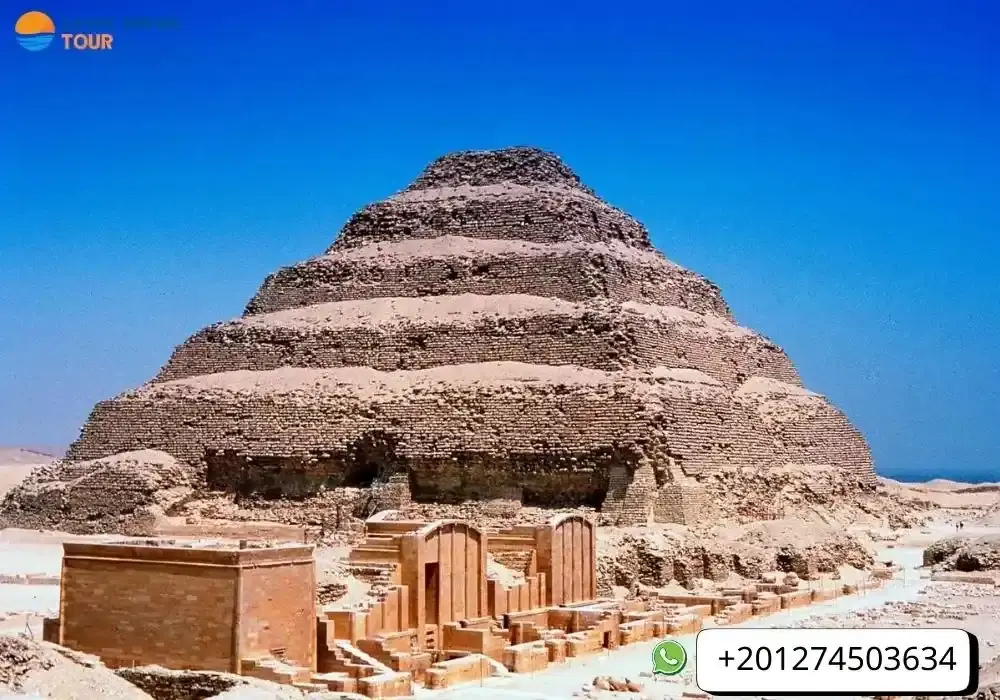
There are walking paths around the site, and you’ll find perfect spots for panoramic shots of the pyramid and its surroundings.
It’s best to bring a hat or umbrella to protect yourself from the strong sun.
Starting your visit early in the morning is also a good idea—you’ll enjoy the site more peacefully and have better chances for great photos without the crowds.
Saqqara is a perfect stop to enrich your 5 Days Cairo to Luxor Tour Packages.
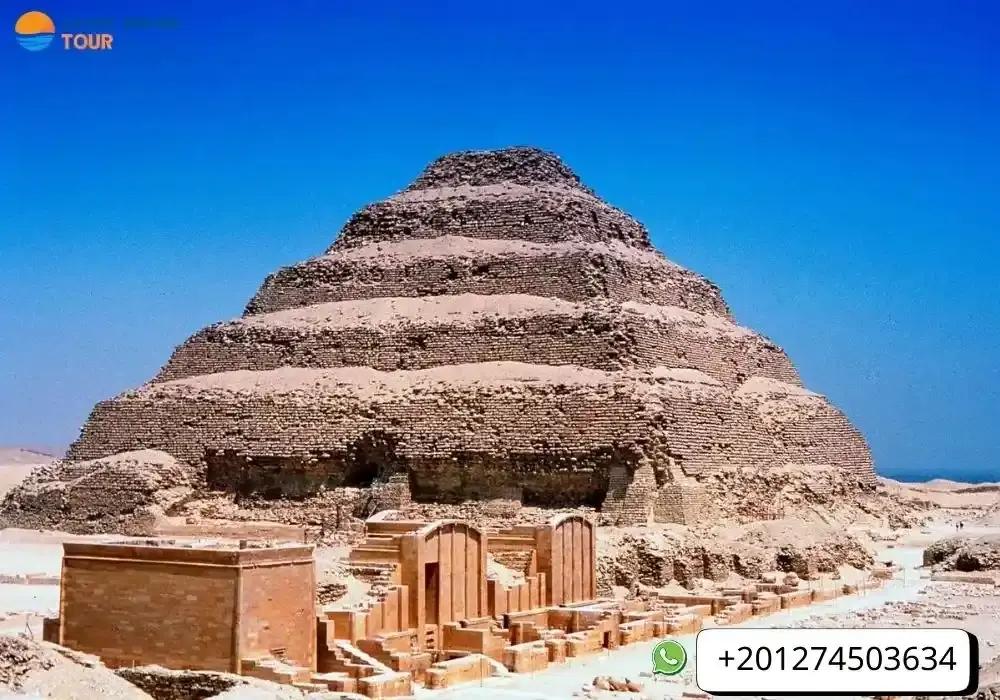
2.Pyramid of Unas
When talking about the pyramids of Saqqara, you can’t skip the Pyramid of Unas.
This isn’t just the burial place of a king—it’s a treasure that reveals secrets about ancient Egyptian beliefs and rituals, and it’s often a highlight in many Egypt trips to the pyramids.
Significance and Features
The Pyramid of Unas is especially famous because it’s the first pyramid where sacred texts were carved onto the walls—what we now call the “Pyramid Texts.”
These weren’t random writings, but prayers and hymns meant to guide the king on his journey to the afterlife.
Even though the pyramid has suffered from time and isn’t fully preserved, restoration work has helped bring back much of its original character, giving us a glimpse of how advanced the Egyptians were in religion and architecture.
Add Saqqara to your 10 Days Round Trip Nile Cruise and Pyramids for a unique mix of history and adventure.
Visiting Tips
Inside the pyramid, expect narrow passages and low light, so carrying a small flashlight can be useful.
Wear comfortable shoes since going in and out requires careful steps. Visiting early in the morning is highly recommended—you’ll enjoy more peace, fewer crowds, and great chances to capture stunning photos.
Saqqara makes a memorable addition to the 11 Days of Classic Egypt, Cairo, Nile Cruise & Red Sea.
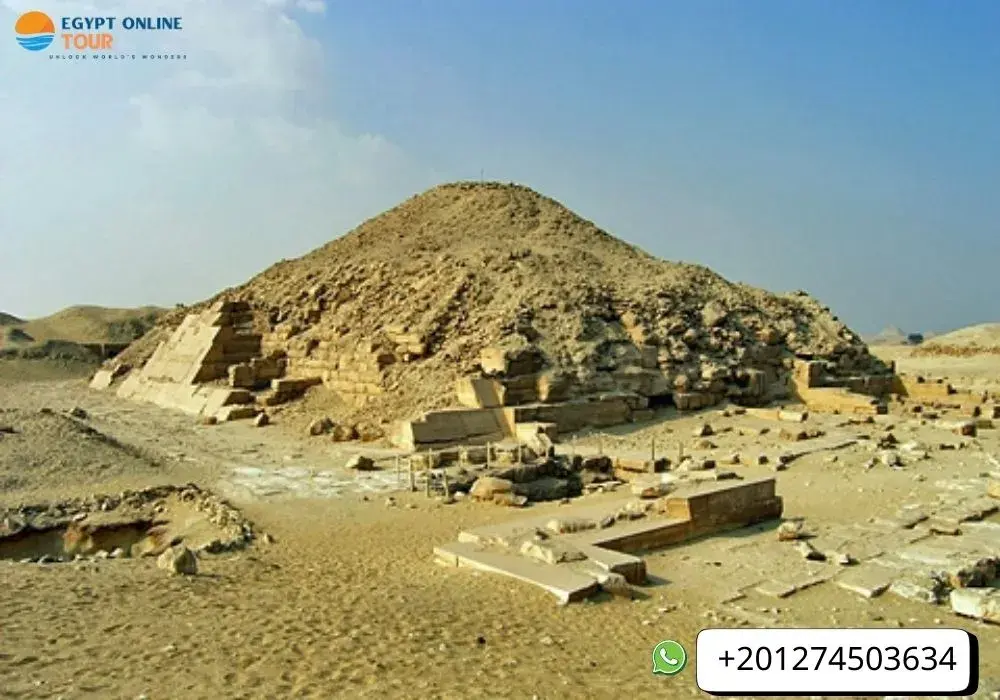
3.Serapeum of Saqqara
The Serapeum is one of the most awe-inspiring places in Saqqara. Before stepping in, it’s important to know that this wasn’t just a burial site—it was a sacred religious complex.
Purpose and Historical Importance
The Serapeum consists of massive underground tunnels carved into the rock, used as a burial place for the sacred Apis bulls, symbols of the god Ptah.
This reflects how central religious practices were in ancient Egyptian life.
The sheer size and precision of the tunnels also highlight the extraordinary effort and skill of the workers and architects who built it.
History lovers often combine Saqqara with the 7 Day Egypt Tour Cairo Nile Cruise and Luxor Temples.
Visitor Guidelines
The tunnels are long and narrow, which can feel overwhelming, especially for first-time visitors.
It’s best to go with a tour guide who can explain the history behind every section.
Always carry water with you since the underground air can feel heavy, and if you enjoy photography, make sure to bring proper lighting for unique shots.
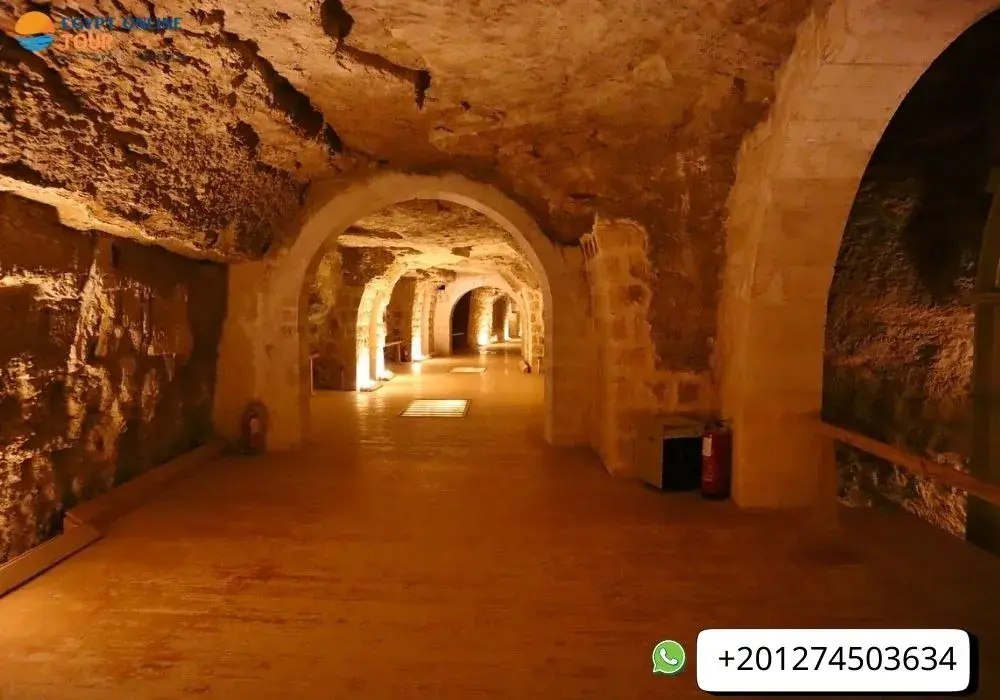
4.Imhotep Museum
The Imhotep Museum is a fascinating stop in Saqqara, dedicated to one of history’s greatest minds: Imhotep, the architect and physician who designed the Step Pyramid of Djoser.
Exhibits and Collections
The museum houses rare pieces linked to Saqqara’s history and Egyptian architecture. You’ll find statues, coffins, tools from daily life, and original fragments from the Step Pyramid itself.
The displays are well-organized, making it easy to follow the evolution of ancient Egyptian art, architecture, and daily practices.
Visiting Hours and Tips
The museum is open almost daily, and the best time to visit is early morning before it gets crowded.
Hiring a guide is highly recommended, as they can highlight small but meaningful details you might miss on your own.
Photography is allowed in certain sections, but always check first to avoid issues.
For travelers seeking heritage, Saqqara is a must-see in most Egypt Classic Tours.
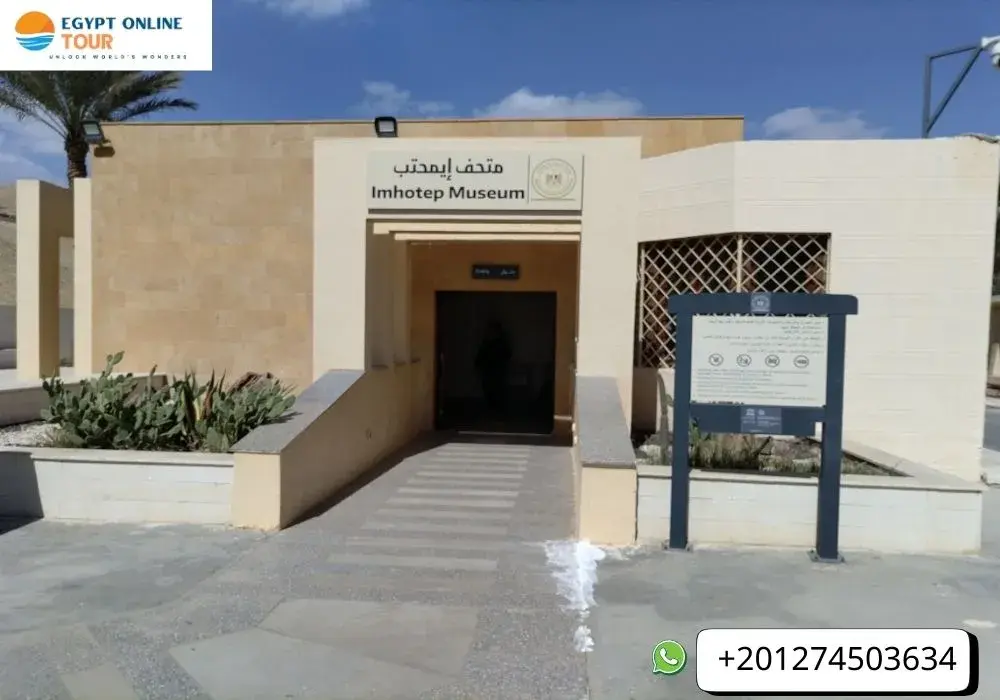
5.Mastaba of Hesy-Re
Among the many tombs at Saqqara, the Mastaba of Hesy-Re holds a very special place. It’s not just a burial site—it’s like an open book telling stories about art, medicine, and daily life in ancient Egypt.
Artistic and Architectural Highlights
Hesy-Re was one of the most important officials during the reign of King Djoser, known both as a physician and a royal scribe.
His tomb stands out because of the wooden panels and stone walls decorated with detailed carvings and paintings.
These scenes show different aspects of ancient Egyptian life, from medical practices and tools to everyday activities like farming and hunting.
What makes this mastaba truly remarkable is that traces of the original colors are still visible today, allowing visitors to feel as if they’re witnessing real-life moments from thousands of years ago.
Architecturally, the layout of the tomb is smartly organized, reflecting how advanced funerary architecture had become at such an early stage of Egyptian history.
Visitor Information
The mastaba is located within the Saqqara complex, so it’s easily accessible from the main entrance. Although it’s not very large, every corner is worth exploring.
Visiting with a guide is highly recommended to better understand the meanings behind the carvings and symbols.
Comfortable walking shoes are a must, since the pathways are uneven and covered with stones.
For photography lovers, this is one of the best spots—especially the rare colorful carvings that make for stunning pictures.
Choose Luxury Egypt Tours and add Saqqara for an exclusive look into ancient civilization.
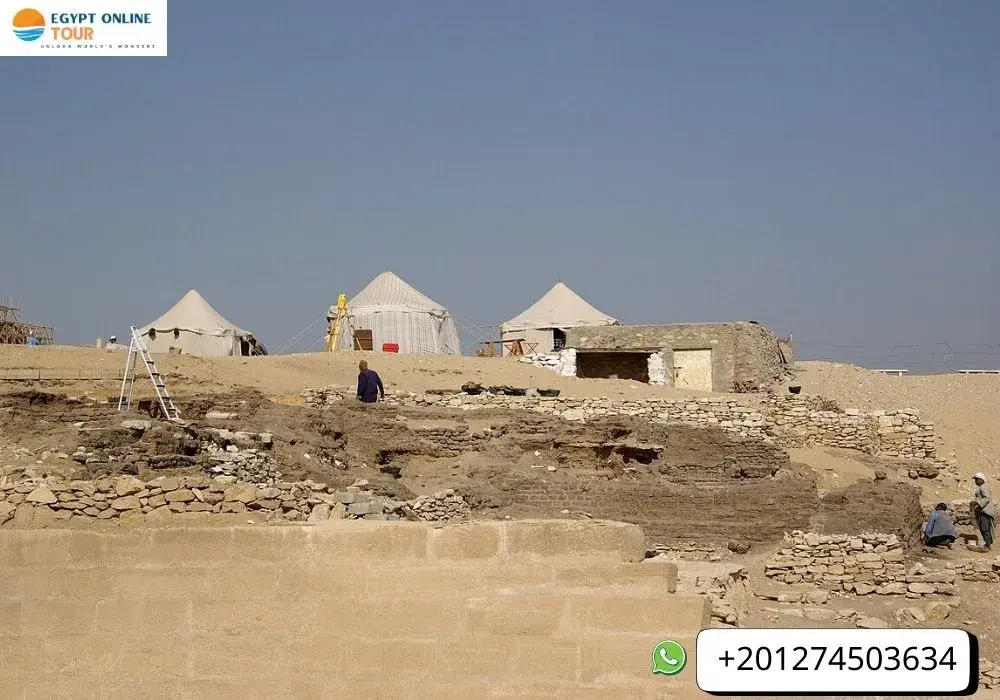
6-Saqqara Mehu tomb
The Tomb of Mehu at Saqqara is one of the most fascinating Old Kingdom discoveries. It belonged to Vizier Mehu, a high official who served during Egypt’s Sixth Dynasty under King Teti, more than 4,000 years ago. The tomb was first uncovered in 1940 but only opened to the public in 2018, making it a relatively new attraction for travelers.
Significance and Features
The Mehu Tomb is remarkable for its exceptionally preserved wall decorations. The reliefs depict scenes of daily life such as farming, fishing, hunting, and family gatherings, along with religious and funerary rituals. The colors are still vivid, giving visitors a unique opportunity to experience Old Kingdom art almost as it looked in antiquity.
- Richly painted walls with detailed hieroglyphs.
- Illustrations of everyday life mixed with spiritual symbolism.
- Insight into the power and prestige of Mehu as vizier.
Visiting Tips
- Timing: Visit early in the morning to avoid crowds and enjoy the site quietly.
- Guides: Hiring an Egyptologist guide will help you understand the symbolism and historical importance of the carvings.
- Nearby Sites: Combine your visit with other Saqqara monuments such as the Step Pyramid of Djoser and the Pyramid of Unas.
- Practical Info: Photography inside is often restricted, so check the current rules with your guide.
Connection to Saqqara Necropolis
The tomb lies within the vast Saqqara Necropolis, the ancient burial ground of Memphis. This adds even more significance — visiting Mehu’s tomb is part of exploring a sacred landscape that also houses pyramids, mastabas, and the famous Serapeum.
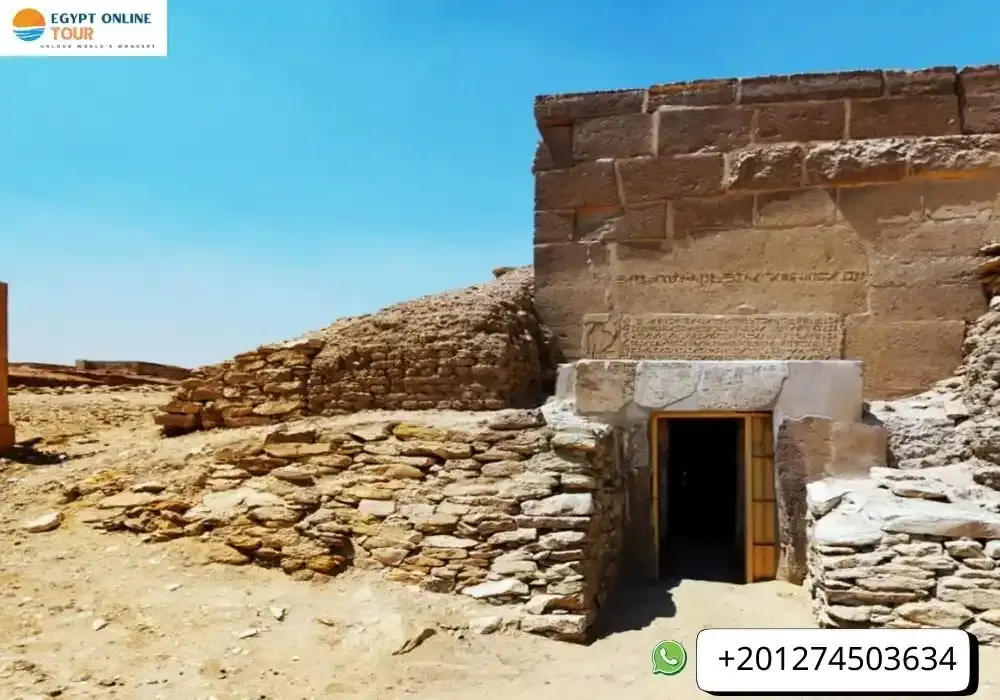
Let our local travel experts help you design the perfect itinerary. Whether you're seeking adventure, culture, or relaxation, we've got you covered!
Recent Discoveries in Saqqara
Saqqara is not only famous for its ancient monuments and small pyramids, but it has also become a hotspot for modern discoveries that continuously capture the world’s attention.
Over the past few years, archaeologists have revealed remarkable tombs, well-preserved mummies, and rare statues.
Each new find adds another missing piece to the story of ancient Egypt, bringing history closer to us than ever before.
You can combine Saqqara with your Grand Egyptian Museum Tour for the ultimate archaeology-focused trip.
Tomb of Prince Userefre
One of the most fascinating recent discoveries in Saqqara is the Tomb of Prince Userefre, which opened new doors to understanding a significant chapter of ancient Egyptian history.
Features and Significance
The tomb stands out for its walls covered with unique carvings and colorful reliefs, showcasing scenes from the prince’s life and illustrating his social and political status.
These decorations are not just artistic elements but historical records that shed light on funerary customs of the Old Kingdom.
The combination of artistic beauty and historical value makes this tomb a vivid testimony to the prince’s influence and his role within the royal family.
Ongoing Excavations
Excavations at the site are still underway, and every season reveals new insights. This means the tomb is not just a single discovery but a gateway to a series of revelations that could reshape our understanding of the era.
Archaeologists believe more secrets remain hidden inside and around the tomb, proving once again that Saqqara still has many surprises beneath its sands.
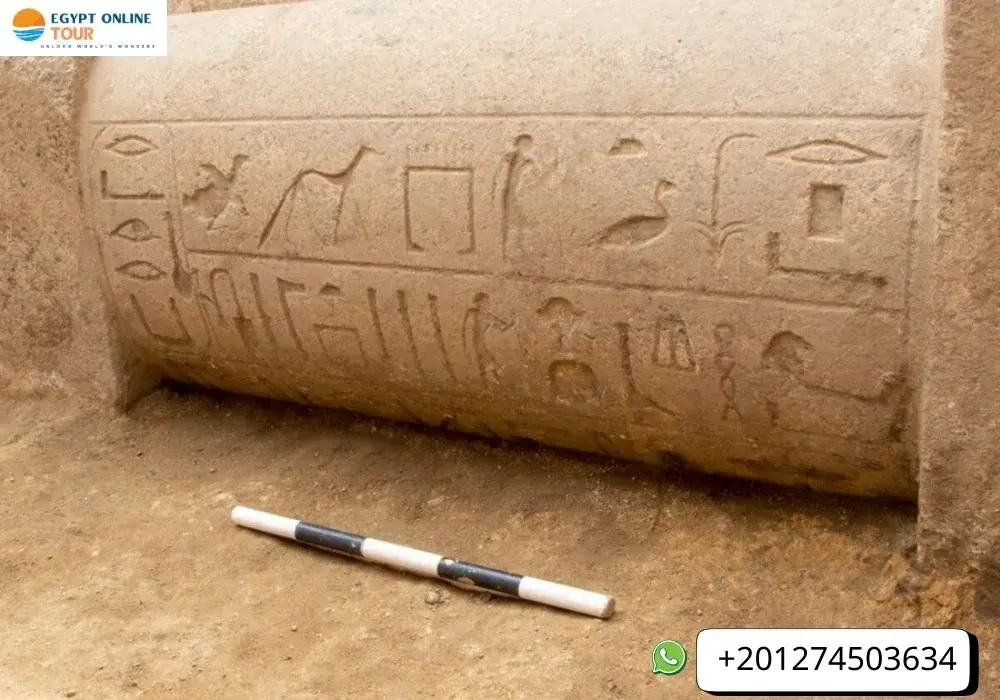
Discovery of 250 Mummies and 150 Bronze Statues
Among the most groundbreaking announcements was the discovery of around 250 mummies along with 150 bronze statues of ancient Egyptian deities.
This finding once again highlighted Saqqara’s role as a sacred center and a key site for religious practices.
Details and Implications
The mummies were found in remarkably good condition, providing clear evidence of embalming techniques used during that period.
The bronze statues represented deities such as Isis, Hathor, and Osiris, reflecting the site’s strong connection to ancient spiritual beliefs.
The sheer number of mummies and statues reveals not only religious devotion but also the social diversity of the people buried in the area.
Saqqara was far more than just a burial ground; it was a holy place of great importance.
Visitor Information
Today, visitors can see parts of these discoveries during their tours in Saqqara, particularly in excavation zones near the pyramids and mastabas.
Some artifacts have also been transferred to the nearby Imhotep Museum, giving tourists the chance to connect the original sites with the unearthed treasures.
Walking through Saqqara now is more than just sightseeing—it’s the unique experience of exploring paths where, only recently, archaeologists uncovered secrets buried for thousands of years.
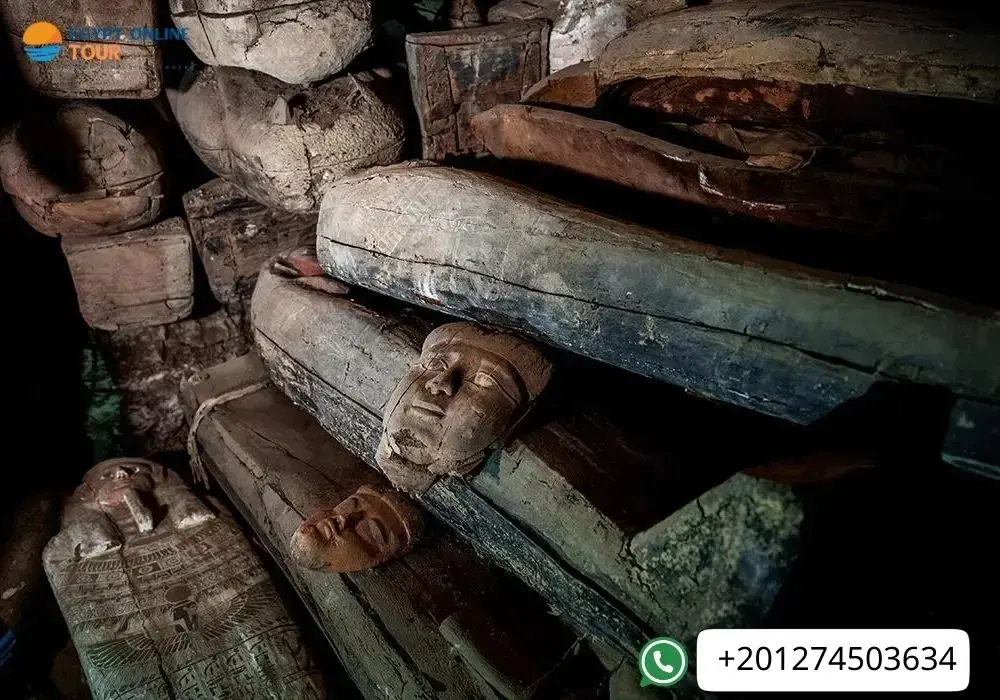
Cultural and Religious Aspects
Saqqara is not only famous for its pyramids and tombs—it also carried deep spiritual and cultural meaning for the ancient Egyptians.
People saw it as a sacred gateway between this life and the afterlife, a place where religion, rituals, and architecture all came together to shape one of the greatest civilizations in history.
Role of Saqqara in Ancient Egyptian Religion
To really understand Saqqara’s importance, you have to see it through the eyes of the ancient Egyptians. For them, it wasn’t just a burial ground—it was holy land.
- Saqqara was strongly tied to the god Ptah, the creator and patron of craftsmen in Memphis, which made the site full of rituals and offerings dedicated to the gods.
- Priests carried out religious duties regularly, not only to protect those buried there but also to ensure their souls could enjoy eternal peace.
- Small temples built near the tombs show how religion wasn’t limited to the dead—it was an everyday part of life for the living as well.
- Inscriptions and texts carved on the walls, such as the Pyramid Texts, reveal how Saqqara shaped the ancient belief in resurrection and the afterlife, leaving behind spiritual knowledge that still fascinates us today.
Burial Practices and Funerary Architecture
Burial in ancient Egypt wasn’t just a custom—it was a sacred practice that reflected deep faith in life after death.
- The Egyptians saw death as a new beginning, which is why they put so much effort into mummification, ensuring the body stayed intact so the soul could recognize it in the next world.
- At first, tombs in Saqqara started as simple mastabas built with mudbrick, but over time they evolved into sophisticated stone structures, eventually leading to the Step Pyramid of Djoser—the first pyramid in history built entirely of stone.
- Inside the tombs, they placed pottery, tools, jewelry, and personal belongings, believing the deceased would need them in the afterlife.
- Wall paintings and carvings were more than art—they were complete stories about the individual’s life, achievements, and devotion to the gods.
- Funerary architecture at Saqqara shows incredible progress: from simple mastabas to massive pyramids, decorated corridors, and precisely designed chambers—all proof of the Egyptians’ unmatched genius in engineering and design.
- The attention to detail in every tomb and pyramid confirms that the belief in rebirth and immortality wasn’t just a religious idea; it was a way of life that influenced everything from art to architecture.
Let our local travel experts help you design the perfect itinerary. Whether you're seeking adventure, culture, or relaxation, we've got you covered!
Practical Travel Tips
When planning your visit to Saqqara, there are some small but very important details that can make a big difference in your whole trip.
These tips will help you feel well-prepared from the moment you leave your hotel until you finish your tour and capture the best memories.
Best Time to Visit Saqqara
The weather has a huge impact on how much you enjoy your visit, which makes choosing the right time really important.
- Best month to visit Egypt is from October to April, when the weather is pleasant and temperatures are comfortable for walking and sightseeing.
- During summer months (May to September), the heat can get extremely high, especially around noon, making the tour exhausting instead of enjoyable.
- To get the best experience, try to start your tour early in the morning or closer to sunset when the temperature is cooler and the sunlight creates perfect conditions for photography.
- Keep in mind that some peak tourist seasons, such as Christmas and New Year, can be crowded. If you prefer a quieter visit, plan your trip away from those times.
Saqqara is very close to Cairo and easy to reach, but choosing the right transportation will determine how comfortable your trip will be.
- Private Car: This is the fastest and most convenient option. The ride from central Cairo takes about 40 minutes under normal conditions, though it may take longer due to traffic.
- Organized Tours (Private or Group): A great choice, since most of these tours include a professional guide to explain everything along the way, plus comfortable transfers from and back to your hotel.
- Public Transportation: You can take a bus or microbus to Giza and then switch to another ride to Saqqara, but this option isn’t very comfortable and can take a lot of time, so it’s not ideal for a quick, well-organized trip.
- The road itself is safe and well-paved, but if it’s your first visit, it’s better to go with someone familiar with the area.
Recommended Tours and Packages
When booking a tour to Saqqara, there are a few things to consider to get the best value.
- Good tours usually include hotel transfers, entrance tickets, and a professional guide who shares historical insights during your visit.
- Some packages also include nearby sites like Memphis or Dahshur, giving you a wider experience and the chance to see more than one landmark in the same day.
- Private tours are especially convenient if you prefer flexibility, as they allow you to manage your own time and choose how long to spend at each stop.
- Always check online reviews for the company before booking to ensure that the service is reliable and other travelers had a positive experience.
What to Pack / How to Prepare
Preparation is key, and packing smartly will make your visit easier and more enjoyable.
- Wear light cotton clothes in summer, and bring a light jacket if you’re visiting in winter, as the weather can sometimes get chilly.
- Choose comfortable walking shoes, since the area is large and includes unpaved paths where you may need to walk long distances.
- Don’t forget sunscreen, a hat, and sunglasses, especially if you’re visiting during hot weather.
- Carry enough water bottles to stay hydrated and energized throughout the day.
- A good camera or smartphone is essential to capture every moment and the stunning sights.
- If you’re visiting Egypt from abroad, make sure to bring your passport and visa. For U.S. citizens, a visa can be obtained upon arrival or applied for online before the trip.
Discover Egypt… Your Adventure, Your Way
Don’t think of visiting Egypt as just snapping photos by the Pyramids. With us, every moment tells a story, and every place lets you feel the spirit of history and authentic Egyptian life.
- From Cairo to Aswan: Explore massive temples, wander through colorful local markets, and step into sites that transport you thousands of years back in time.
- Desert and Sea in One Journey: Sail the Nile, dive into the Red Sea’s crystal waters, and live unforgettable desert adventures—whether it’s a safari, camel ride, or sleeping under a sky full of stars.
- Comfort from the Start: Smooth transportation, carefully selected accommodations, and expert English-speaking guides ensure you enjoy every step without stress.
- A Journey Designed for You: Whether you’re after relaxation or adventure, traveling solo, with family, or friends—our tours are tailored to your style, pace, and budget.
- Experience Egypt Like a Local: Taste authentic Egyptian cuisine, share traditional Bedouin gatherings, and discover cultural traditions that make your trip more than just sightseeing.
The Best Time to Start Your Journey Is Now
Ready to make your dream trip to Egypt a reality? Book today and let us design a personalized tour that matches your style, budget, and passion for adventure. Contact us now and let Egypt amaze you effortlessly.
Frequently Asked Questions
1 What is the Saqqara Necropolis in Egypt? ▶
2 Where is Saqqara Necropolis located? ▶
3 Why should I visit Saqqara Necropolis? ▶
4 How long does it take to explore Saqqara Necropolis? ▶
5 Is Saqqara Necropolis family-friendly? ▶
6 What should I wear when visiting Saqqara Necropolis? ▶
7 Can I hire a guide at Saqqara Necropolis? ▶
Popular Categories
Popular Posts

Top Alexandria Beaches You Must Visit 2026

What are the important holidays in Egypt?
